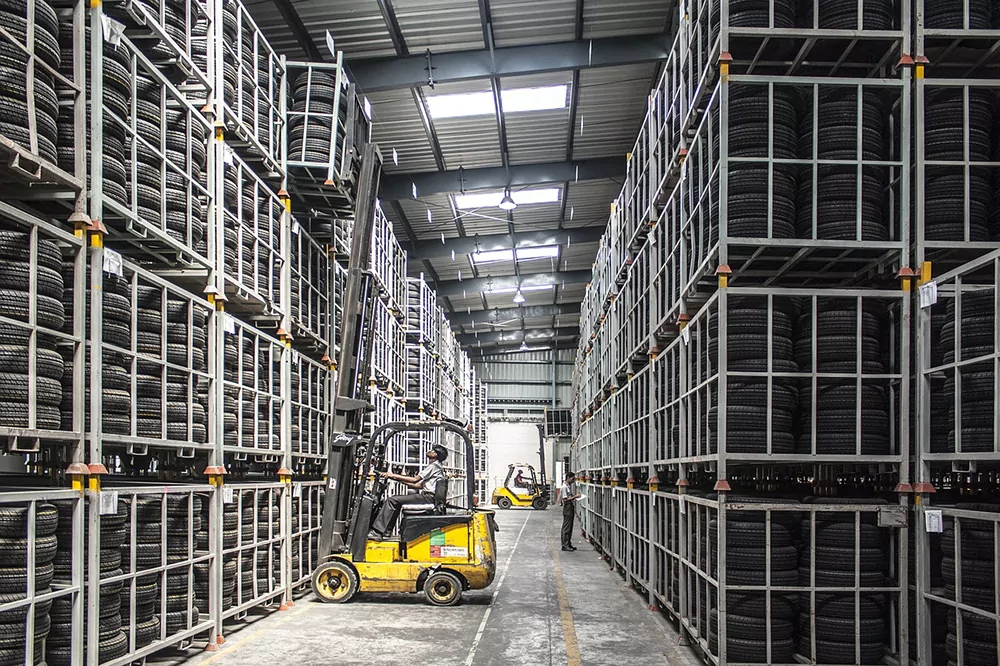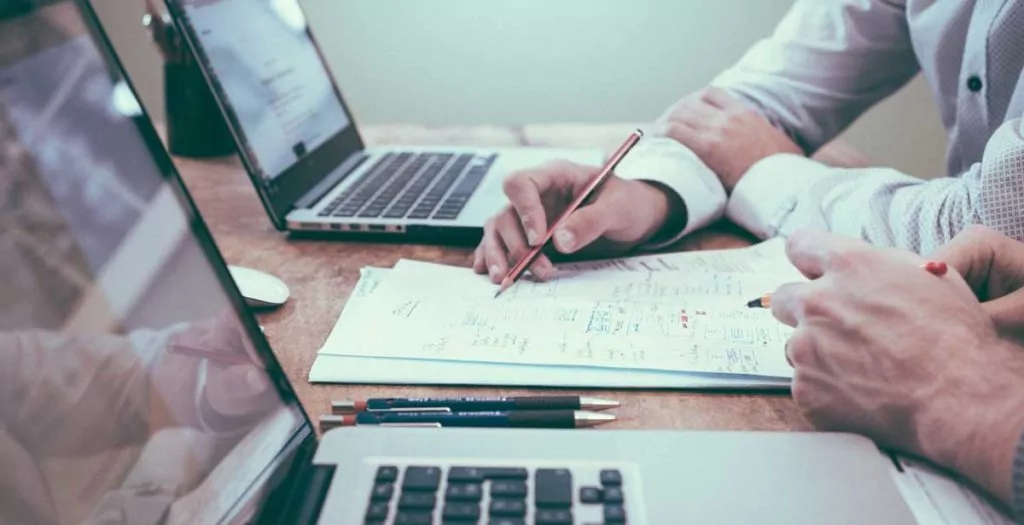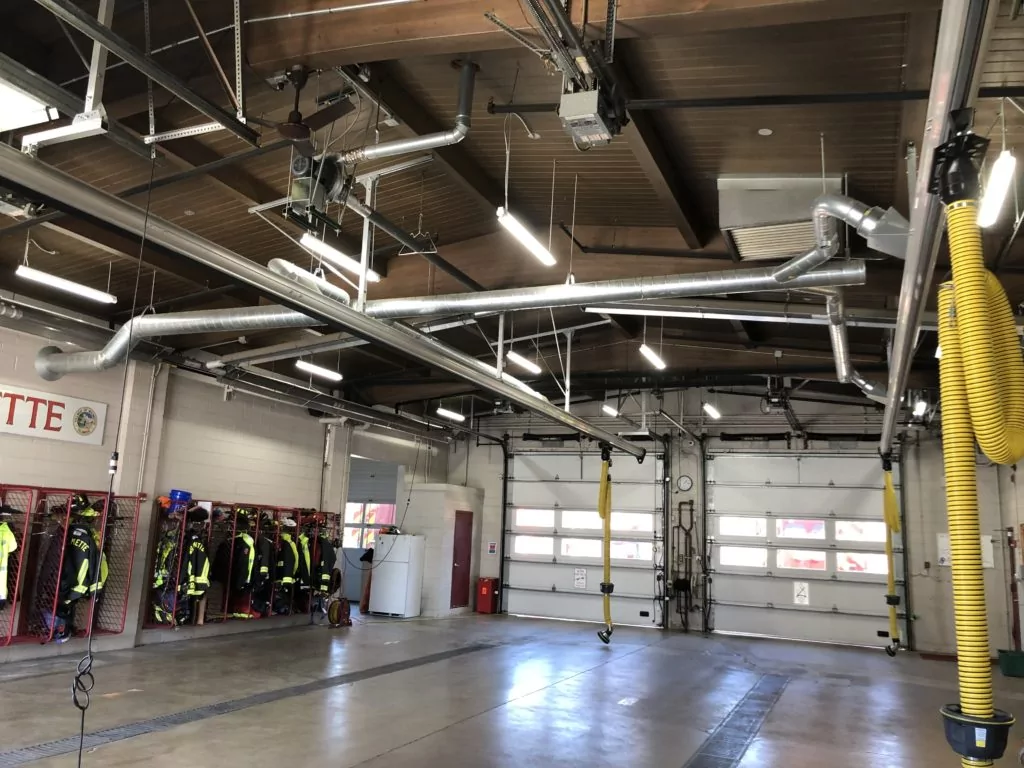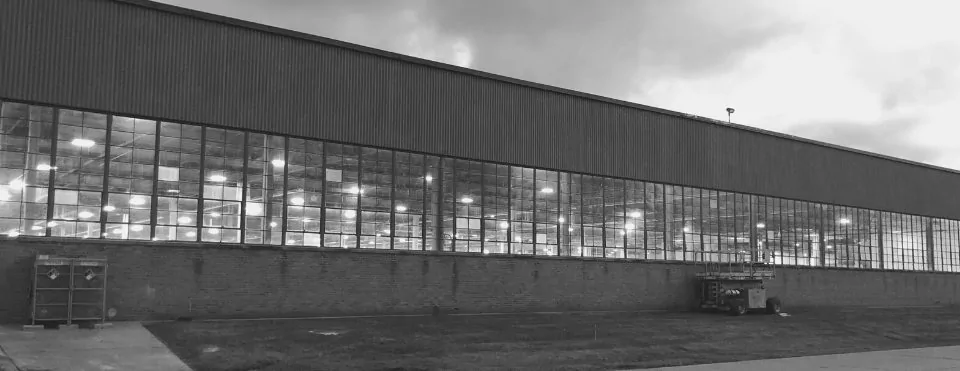Energy Efficient Commercial Buildings Deduction

Apr 30 2024
In addition to local Commonwealth Edison utility rebates and grants, the energy-efficient commercial buildings deduction is a tax incentive offered by the U.S. government. It allows building owners who install qualified energy-saving systems to deduct a portion of the cost from their taxable income. This deduction can be substantial, making energy-efficient upgrades more financially attractive.
By lowering the overall project cost through the deduction, the financial viability of energy-efficient upgrades becomes more appealing. This can make it easier to secure financing from lenders, as the project demonstrates a clearer path to profitability. Additionally, the potential tax savings can improve the project’s return on investment (ROI), making it a more attractive proposition for investors.
Buildings that boast energy-efficient features are not only good for the environment, but they also tend to command higher rents and attract more qualified tenants. This translates to increased building value and potentially higher resale value down the line. These factors can further strengthen the project’s financial standing and make it even more attractive to potential lenders and investors.
The energy-efficient commercial buildings deduction offers a valuable financial tool for building owners and developers. By reducing project costs, improving ROI, and enhancing building value, this deduction can significantly improve the chances of securing financing for energy-efficient construction and renovation projects.
The Power of 179d Tax Credit
The 179D tax credit, formally known as the Energy-Efficient Commercial Buildings Deduction, is a powerful incentive program offered by the U.S. government. This program encourages building owners to invest in energy-saving upgrades by allowing them to claim a significant deduction on their taxes. Let’s delve deeper into how 179D can benefit your project.
The 179D credit directly reduces the taxable cost of qualifying improvements to a building’s lighting, heating, ventilation, and air conditioning (HVAC) systems, or its building envelope (walls, roof, windows, etc.). This translates to immediate tax savings, making energy-efficient upgrades more financially attractive. Furthermore, the increased deduction amounts introduced by the Inflation Reduction Act of 2022 make these projects even more enticing.
With the 179D credit lowering the project’s overall cost, financing for energy-efficient upgrades becomes more accessible. Lenders view projects with tax benefits more favorably as they demonstrate a clearer path to profitability. Additionally, the potential tax savings improve the project’s overall return on investment (ROI), making it a more compelling proposition for investors seeking strong financial returns.
The benefits of 179D extend beyond tax savings. Buildings with energy-efficient features are not only environmentally friendly but also tend to command higher rental rates and attract a higher caliber of tenants. This translates to increased building value and potentially higher resale value down the line. These factors further strengthen the project’s financial standing and make it even more attractive to potential lenders and investors seeking stable and valuable assets.
The 179D tax credit is a win-win proposition. It incentivizes building owners to make environmentally responsible choices while offering significant financial advantages. By promoting energy efficiency, this program contributes to a more sustainable future and helps businesses save money on their operating costs.

Calculating Energy Efficiency in Buildings
There are a number of different ways to calculate energy efficiency in buildings. The most common approach is to use energy simulation software. In order to assign the tax credit, we recommend using an outside engineering firm like Blue Energy Group to measure and validate the energy savings, which is often based on a baseline of construction standards and not your actual savings. This software takes into account a variety of factors, such as the building’s size, shape, orientation, materials, and climate, to estimate its energy consumption.
Using a specialist firm like Blue Energy Group can help your tax accountant feel confident in filing a tax credit they don’t often use, as well as be with them during a dreaded audit. In fact, last time we talked to Blue Energy, they had never lost an audit when justifying this tax credit.
Another way to calculate energy efficiency is to use energy benchmarks. Energy benchmarks are comparisons of energy consumption between similar buildings. They can be used to identify buildings that are using more energy than they should and to develop energy efficiency strategies.
Case Study on Using the Energy Efficient Commercial Building Tax Credit
In 2020, Verde upgraded the existing lighting at Oak Park Temple in Illinois. Because of their commitment to sustainability, we put in advanced lighting systems with daylight harvesting and occupancy sensors, all grouped in a networked lighting control system.
In 2021, we proposed a project to replace their outdated boiler system. In addition to challenges around heating and cooling, with the cooling using a now illegal pump and dump system that runs city water over the compressors to cool them off, they had little outside fresh air during the Covid crisis. In fact, the classrooms of the preschool needed the windows open year round to stay open, even on the coldest and warmest days. Talk about energy inefficiency.
During 2022 and 2023, we installed a heat pump VRF system combined with a series of energy recovery ventilators. We call this combination a VHE HVAC system, or Very High Efficiency HVAC. This new system has saved over 60% of the buildings energy usage in terms of kBTUs – a staggering reduction.
Since the temple is not a tax paying entity, they cannot take advantage of the 179d tax credit. However, as the project went well over in terms of costs, Verde was able to offset some of the costs we would have charged to the temple with offset tax payments via the Energy Efficiency Commercial Building tax credit. In fact, since the passing of the Inflation Reduction Act, this credit was increased and very helpful to the overall project financing – offsetting up to $40,000 of taxes that would have been paid and “assigned” to Verde by the building. And of course, all of this was done via engineering and tax support by Blue Energy Group.
Who is the 179D Tax Credit Helpful to?
The 179D tax credit can be helpful for several parties involved in commercial buildings:
1. Building Owners: This is the primary beneficiary. They can directly claim the tax deduction on their qualified energy-efficient improvements, lowering their taxable income and offering significant financial savings.
2. Building Designers (Architects, Engineers): Since 2023, the credit has expanded to include designers of energy-efficient systems installed in certain tax-exempt buildings. This can be particularly valuable for designers working on projects for government entities, tribal governments, and some non-profit organizations.
3. Project Financiers (Lenders): Projects with the 179D tax benefit become more attractive to lenders. Lower project costs and improved ROI due to tax savings make the project a more secure investment with a clearer path to profitability.
4. Potential Investors: Similar to lenders, the tax credit enhances the project’s financial appeal for investors. The potential for higher returns due to tax savings makes the project a more compelling proposition for those seeking strong financial gains.
5. Tenants (Indirectly): While not directly receiving the tax credit, tenants can benefit from the positive outcomes. Buildings with energy-efficient features often have lower operating costs, which can translate to lower rent or a more stable rental price. Additionally, such buildings tend to be more comfortable and environmentally friendly, creating a more attractive space for tenants.
By following these tax saving tips, you can help to improve energy efficiency. You can also use a free energy efficiency assessment if your building is located in Illinois – and let our experienced analysts do the calculations and design a commercial energy efficiency project for you.
Featured Posts

Mar 05 2025
Cut Warehouse Costs With Proven Commercial Energy Efficiency Upgrades
Warehouse operators are relentlessly pursuing smarter ways to reduce costs, improve commercial energy efficiency, and keep productivity moving forward. But what’s the best way to achieve this? As experts in commercial energy efficiency, Verde has the…
Continue Reading >

Mar 15 2021
Energy Savings Formula
In 2002, I became a firefighter in the north suburbs of Chicago. I was young and idealistic - loving almost every part of the job. However, I had another secret passion - sustainability. In addition…
Continue Reading >
Related Articles

Mar 05 2025
Cut Warehouse Costs With Proven Commercial Energy Efficiency Upgrades
Warehouse operators are relentlessly pursuing smarter ways to reduce costs, improve commercial energy efficiency, and keep productivity moving forward. But what’s the best way to achieve this? As experts in commercial energy efficiency, Verde has the…
Continue Reading >

Sep 19 2023
Energy Efficiency in Buildings Calculations
Energy efficiency in buildings is the ability to reduce energy consumption while maintaining the same level of comfort and functionality. It can be achieved through a variety of measures, such as improving insulation, air sealing,…


